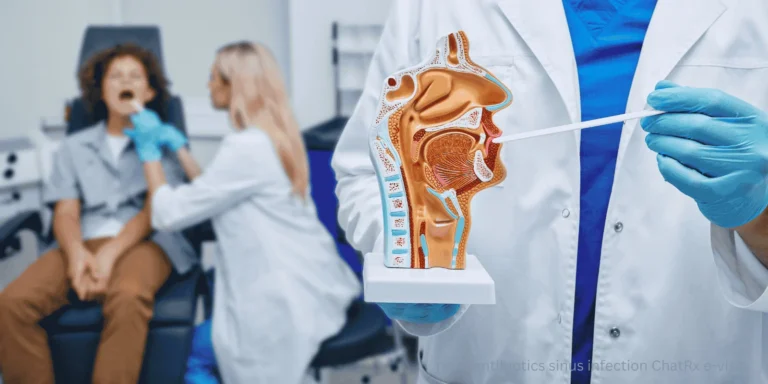“My throat hurts, but I don’t have those white spots everyone talks about,” my patient said during our virtual consultation. “How do I know if this is strep?”
This confusion happens constantly. Pharyngitis is the medical term for throat inflammation, while strep throat is a specific type of bacterial pharyngitis. Understanding the differences helps determine when antibiotics are needed.
The Terminology Confusion
Pharyngitis describes any throat inflammation — viral, bacterial, or from other causes like allergies or acid reflux.
Strep throat specifically refers to pharyngitis caused by Group A Streptococcus bacteria, requiring antibiotic treatment.
Most pharyngitis is viral and won’t respond to antibiotics, making accurate diagnosis crucial for appropriate treatment.
Symptom Overlap Challenges
Both conditions cause severe throat pain, difficulty swallowing, and general discomfort that can feel identical to patients.
Fever patterns can occur with viral and bacterial pharyngitis, though strep typically produces higher temperatures.
Throat appearance varies widely — even strep throat doesn’t always show the classic white patches patients expect to see.
Key Distinguishing Features
Strep throat onset tends to be sudden and severe. Patients often say they felt fine yesterday but woke up unable to swallow.
Viral pharyngitis usually develops gradually over 2-3 days, often following cold symptoms like runny nose or cough.
Associated symptoms help differentiate: strep rarely causes cough, runny nose, or hoarseness, while viral pharyngitis often does.
Age-Related Differences
Children more commonly develop strep throat, especially ages 5-15 during school months when transmission is easier.
Adults can get strep but more often experience viral pharyngitis or other non-bacterial causes of throat inflammation.
Toddlers under 3 rarely develop true strep throat, making viral causes more likely in this age group.
Physical Examination Clues
Strep throat typically shows:
- Red, swollen tonsils (sometimes with white patches)
- Swollen, tender lymph nodes in the neck
- Tiny red spots on the roof of the mouth
- Absence of cough or runny nose
Viral pharyngitis often includes:
- General throat redness without specific patterns
- Concurrent cold symptoms
- Less dramatic lymph node swelling
- Possible hoarseness or voice changes
Testing Reality Check
Rapid strep tests are highly accurate when positive but can miss some strep cases, especially in adults.
Throat cultures remain the gold standard but take 1-2 days for results.
Clinical judgment plays a major role when symptoms strongly suggest strep but initial tests are negative.
Treatment Implications
Strep throat requires antibiotics to prevent complications like rheumatic fever and reduce transmission to others.
Viral pharyngitis needs supportive care — antibiotics won’t help and may cause unnecessary side effects.
Symptom relief approaches are similar for both: pain relievers, throat lozenges, warm salt water gargles, and adequate hydration.
When Testing Becomes Essential
High-risk presentations include sudden severe throat pain with fever, especially in children or during known strep outbreaks.
Household exposure to confirmed strep cases increases the likelihood that throat pain represents bacterial infection.
Persistent symptoms lasting more than a week despite supportive care warrant medical evaluation.
Complications to Consider
Untreated strep can lead to rheumatic fever, kidney problems, or spreading soft tissue infections.
Viral pharyngitis occasionally leads to secondary bacterial infections but typically resolves without complications.
Overtreatment with unnecessary antibiotics contributes to resistance and side effects without providing benefits.
Prevention Strategies
Good hygiene including frequent handwashing helps prevent both viral and bacterial throat infections.
Avoid sharing drinking glasses, utensils, or personal items during illness outbreaks.
Stay home when ill until fever-free for 24 hours to prevent spreading infections to others.
The key is working with healthcare providers to distinguish between these similar conditions, ensuring appropriate treatment while avoiding unnecessary antibiotic use for viral infections that will resolve on their own.













